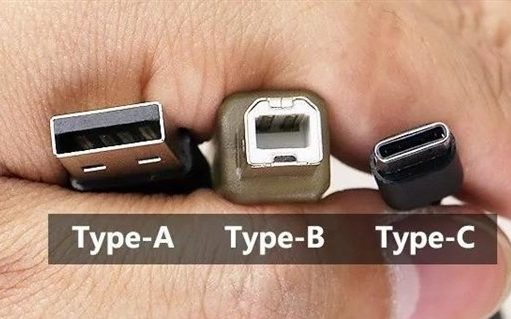More and more mobile phones, notebooks, tablet computers and other devices choose to carry Type-C interface. Why is this interface favored by the market, and what are its benefits? Today’s Speed Shark Class will talk to you about the Type-C interface.
What is the Type-C interface?
The concept of Type-C interface is explained on Baidu Encyclopedia: Type-C is the latest USB interface form factor, and its volume is much smaller than Tpe-A and Type-B.
There is no difference between the positive and negative directions of this interface, and it can be plugged and unplugged at will.
In addition, Type-C is an interface type that can be applied to both PC (master device) and external devices (slave devices, such as mobile phones), which is epoch-making.

From the appearance of the interface, the biggest feature of Type-C is that it does not distinguish between positive and negative.
Players who are familiar with DIY hardware know that whether it is CPU, memory stick, graphics card, hard disk interface, they all have a “silly-proof port” design to prevent the interface from being plugged in and failing to boot.

The USB-A type interface we use most often has a foolproof design. However, due to the small size of the interface, miracles of vigorous efforts occur from time to time. The USB Type-C interface solves this problem from the source.
Because the 24 pins of this interface are symmetrically distributed in the center of the contact function. In this way, the equipment can successfully recognize and realize the operation of complete functions when inserting and inserting in reverse.

What are the advantages of Type-C?
The USB Type-C interface is more convenient to plug and unplug, and more importantly, it has strong compatibility.
Up to 10Gb/s data transmission bandwidth
The most common use for connecting different devices to each other is naturally data exchange.
The latest USB transmission protocol standard is USB 3.1 Gen2, and its theoretical bandwidth can reach a transmission rate of 10Gb/s.
As the latest USB interface shape standard, the USB Type-C interface naturally supports the USB 3.1 Gen2 standard, and can reach a read and write speed of 1GB per second during file transfer.

In addition to data transmission, this interface also has power transmission capabilities.
The USB Type-C interface has USB PD (USB Power Delivery Protocol), which supports a power output of up to 20V/5A, which is 100W charging power.

In addition to supporting PD fast charge protocol, this interface also supports DP Altmode video output protocol.
This is achieved by adding a Display Port video bus to the original USB bus in the Type-C interface.
That is to say, the video output function of the Type-C interface is USB+DP.
Whether it supports DP1.2 or 1.4 interface protocols, its bandwidth supports 4K@60Hz high-standard video playback.
When the notebook is connected to an external display device, using the Type-C interface to connect does not need to use a power cord to power the notebook. The keyboard and mouse can also be controlled through the USB-A interface on the monitor, which is the extended function of the USB HUB .
This not only solves the problem of messy desktop cables, it is also more convenient when the equipment is transferred. When you are off work or in a meeting, you can unplug a Type-C cable and go, which greatly improves efficiency. This is a function that the traditional HDMI and DP interfaces cannot achieve.
Don’t forget, the phone also has a Type-C interface. Hold a notebook while discussing plans? Only a monitor that supports Type-C interface and a mobile phone can complete the conference communication. One line = N lines, enjoy lightweight office. Simple, convenient and worry-free.

Therefore, the USB Type-C interface is not only easy to plug and unplug, but also extremely compatible with the device. It can not only achieve high-standard data transmission and power supply, but also the current top level in video signal transmission specifications.
In the Type-C era, using a display with USB-C port expansion can effectively reduce the number of cables, which is a boon for most people.



